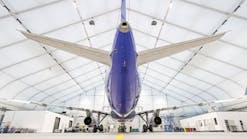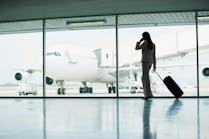Xovis 3D Sensors, Software Reduce Queue Wait Times, Analyze Social Distancing, Improve Efficiency
Xovis is rapidly expanding its airport footprint throughout the United States in response to the growing demand for passenger safety in today’s COVID-19 world.
Today, Xovis’ 3D sensors and technology are employed in 15 airports throughout the United States including DFW (Dallas Ft. Worth, Texas), SAN (San Diego, California), SLC (Salt Lake City, Utah), LGA (New York City), MSP (Minneapolis/St. Paul), SEA (Seattle, Washington), SFO (San Francisco, California), JFK (New York City), and ATL (Atlanta, Georgia).
The Xovis Passenger Tracking System (PTS) combines 3D sensors and software, helping to improve efficiency throughout the airport from addressing the most dreaded and tedious part of the passenger journey: queueing. Based on 3D images computed directly on the ceiling-mounted 3D sensors, passengers are counted and tracked anonymously. The Xovis Airport Software receives data streams from the sensors and provides airport operators with valuable key performance indicators (KPI’s) such as wait times, process times and passenger throughput. The KPI’s are visualized on an intuitive dashboard, enabling airports to:
• Quickly identify crowded areas and bottlenecks.
• See what is going at any moment; the intuitive and comprehensive user interface offers real-time insights on every process point.
• Playback the entire operation: data can be replayed simultaneously from multiple process points to identify the cause of an issue.
Xovis works directly with the airport to provide their 3D sensors and software technology portfolio to measure and analyze people flow. In turn, the system generates real-time data to empower the right people to improve flow. Whether at security, check-in, immigration, or retail/concession spaces, Xovis is the technology eyes and ears of that space.
“Through our technology solutions, airport terminal managers, CX directors, and BI analysts can measure throughput, staffing, and wait times for many sectors of the passenger journey in real-time with precision and privacy,” said Cody Shulman, managing director at Xovis, North America. “Now more than ever, passengers also want to know they’re safe. Our 3D optical sensors measure social distancing, spatial occupancy, and facemask compliance to keep airport passengers and employees safe.”
At one of the country’s busiest airports, Dallas Fort Worth (DFW), which welcomed nearly 40 million passengers in 2020, Xovis’ 3D sensors and software are deployed in multiple areas to create a safe and seamless travel experience for passengers and employees. Xovis sensors are located at all 15 security checkpoints, 140 restrooms, as well as the Customs and Border Patrol hall, the second system of its kind in any U.S. airport. In all, 800 3D sensors are at DFW to help with counting and tracking passengers anonymously. The Xovis software receives data streams from al the sensors, calculates and visualizes the targeted KPI’s. DFW is also home to the Xovis jet bridge proof of concept.
“DFW Airport is focused on elevating the customer experience and dedicated to finding innovative solutions,” said Ken Buchanan, executive vice president of the Revenue Management & Customer Experience at DFW Airport. “Using new technology that allows us to monitor and remedy historical pain points, such as long wait times, is critical to enhancing the experience our customers have during their time at DFW.”
With several of sensors stitched together creating a “multisensor,” the Xovis PTS can calculate and visualize physical distancing maps. These maps help to identify critical areas where it becomes difficult for people to follow social distancing rules. Additionally, specific KPI’s can be calculated and visualized.
“Long queues make for a negative airport experience and frustrate passengers. Xovis provides airports with a powerful tool to move passengers more smoothly through their facilities, optimize staff and infrastructure planning, and ultimately increase customer satisfaction,” added Shulman.




